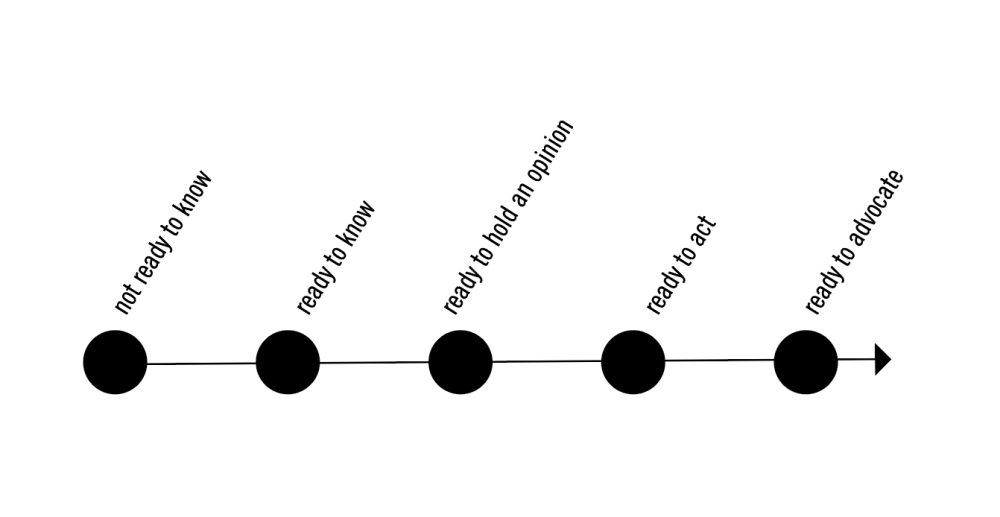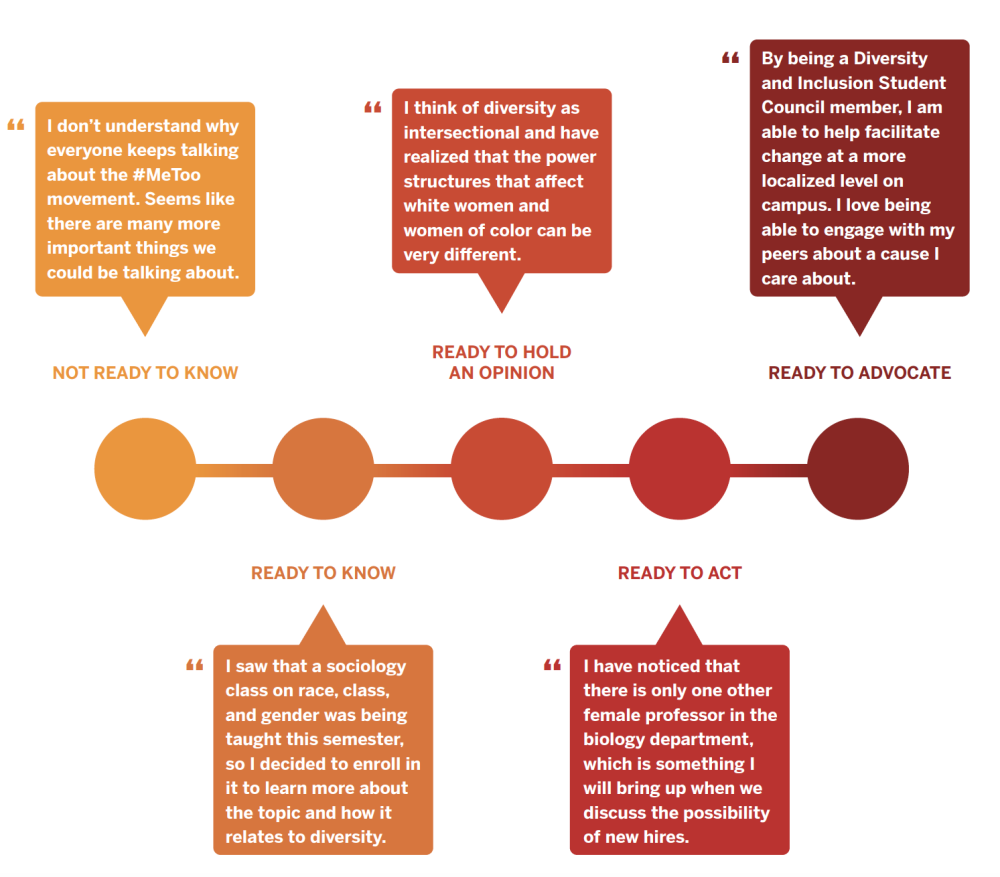Who are we designing for?
People have myriad motivations, dispositions, and abilities that shape the way they understand, reflect, and critically think about issues in the world. How they engage with information may facilitate or hinder a willingness to see perspectives other than their own. The way in which people interact with information also impacts their level of understanding of the tools, solutions, ideas, systems, and contexts that surround such perspectives.
How might we predict motivations, dispositions, and abilities?
Technology strategist David S. Rose argues that human beings are in constant negotiation with information regarding issues that may directly or indirectly affect their lives. In his belief, he sees a progression of information receptivity depending on a variety of factors aligning to a person’s willingness to hear or act on an issue. Rose’s Audience Receptivity Gradient should not be evaluated as a permanent label that one wears. Depending on the issue at hand, people oscillate along the gradient. Through exposure and engagement in higher levels of critical thinking, people can alter their position along the spectrum.
We want people to think critically about an issue and then change their thinking and behavior in some way.
When designing for complex issues, it’s useful to think about Rose’s audience receptivity gradient as a way to target effective messaging to shift people’s thinking and actions. Typically, you would only think about moving people one or two spots along the gradient.
For audiences in the not ready to know end of the spectrum, it can be useful to focus on asking questions to help people begin to understand that an issue exists. Next, you can help them analyze arguments and assess credibility through the use of introductory information and data. As you move along the spectrum, you can begin to focus on defining complex terms to help with a better understanding of the issues. As you are moving towards action and advocacy, you can being to focus more on tapping into emotional messaging and specific calls to action.
This will allow you to plan for artifacts and systems that can move people from a stagnant space of not knowing to spark advocacy and critical thinking.
This example below demonstrates different audience statements related to diversity and inclusion as people move along the spectrum. Hearing these audience statements can help understand the shifting mindsets along the spectrum and how to better target them with messaging. How do you meet each one of these people where they are in order to move them forward?
credits:
writing developed in collaboration with Rebecca Tegtmeyer and Alberto Rigau
sample gradient by Karen Hessing

